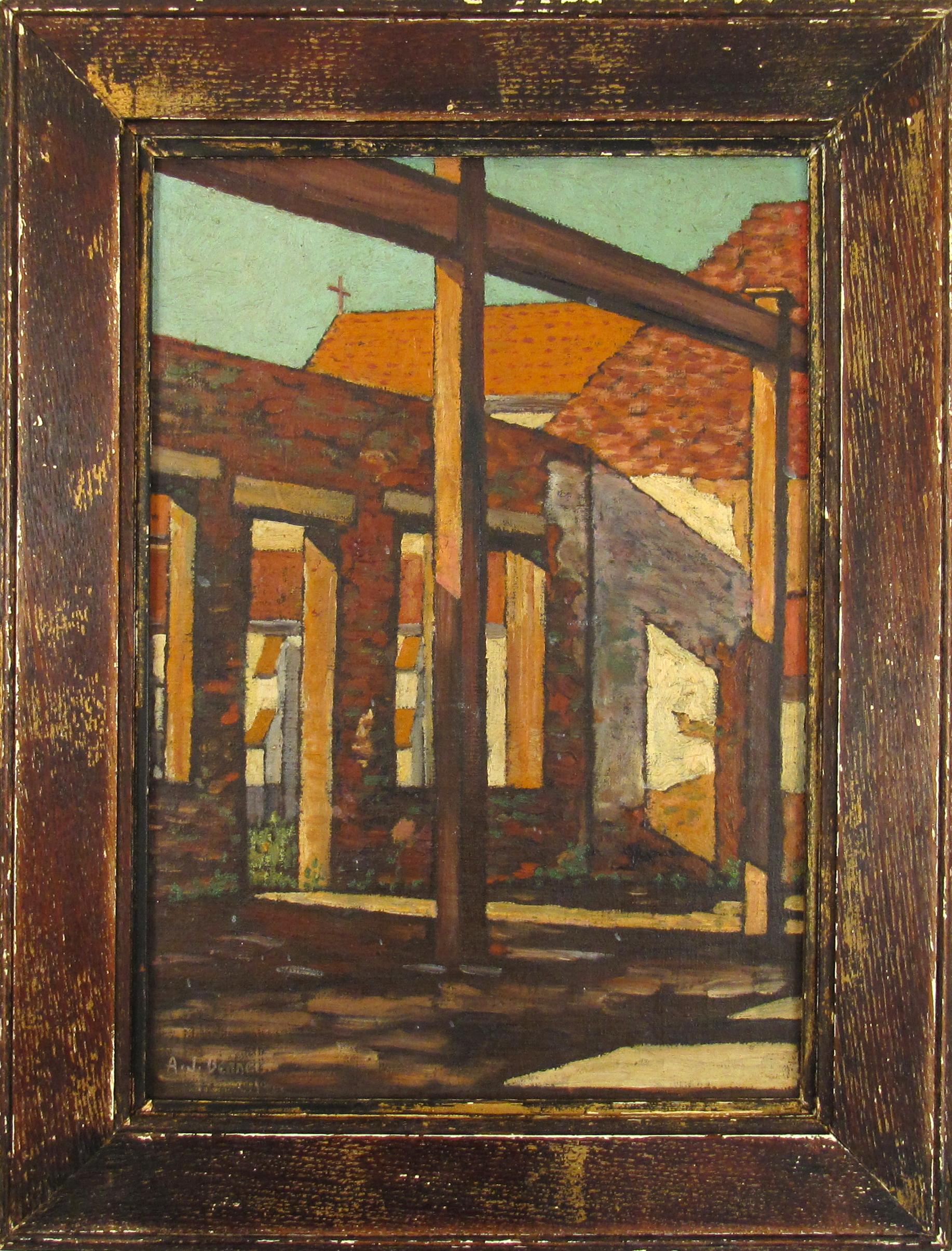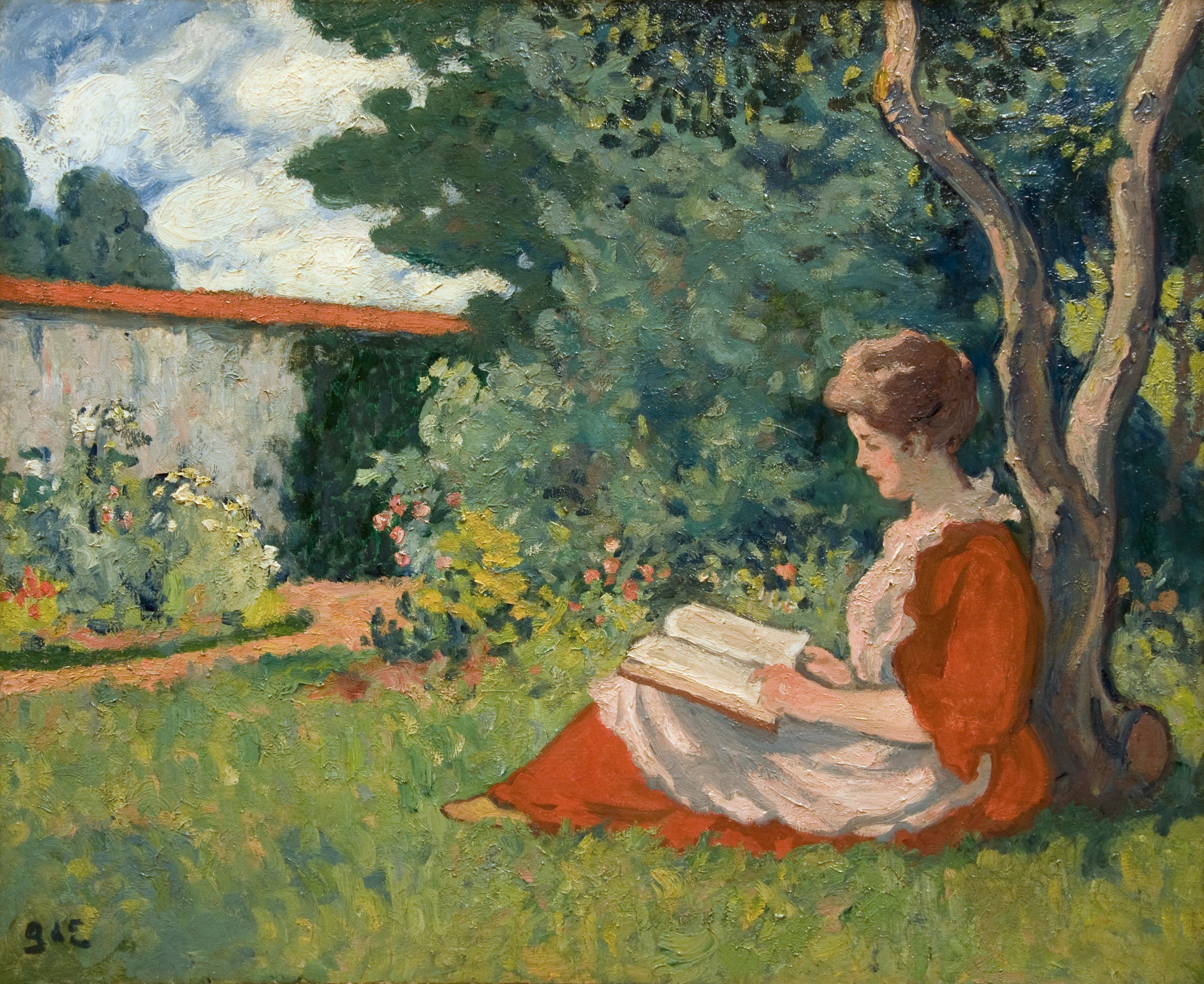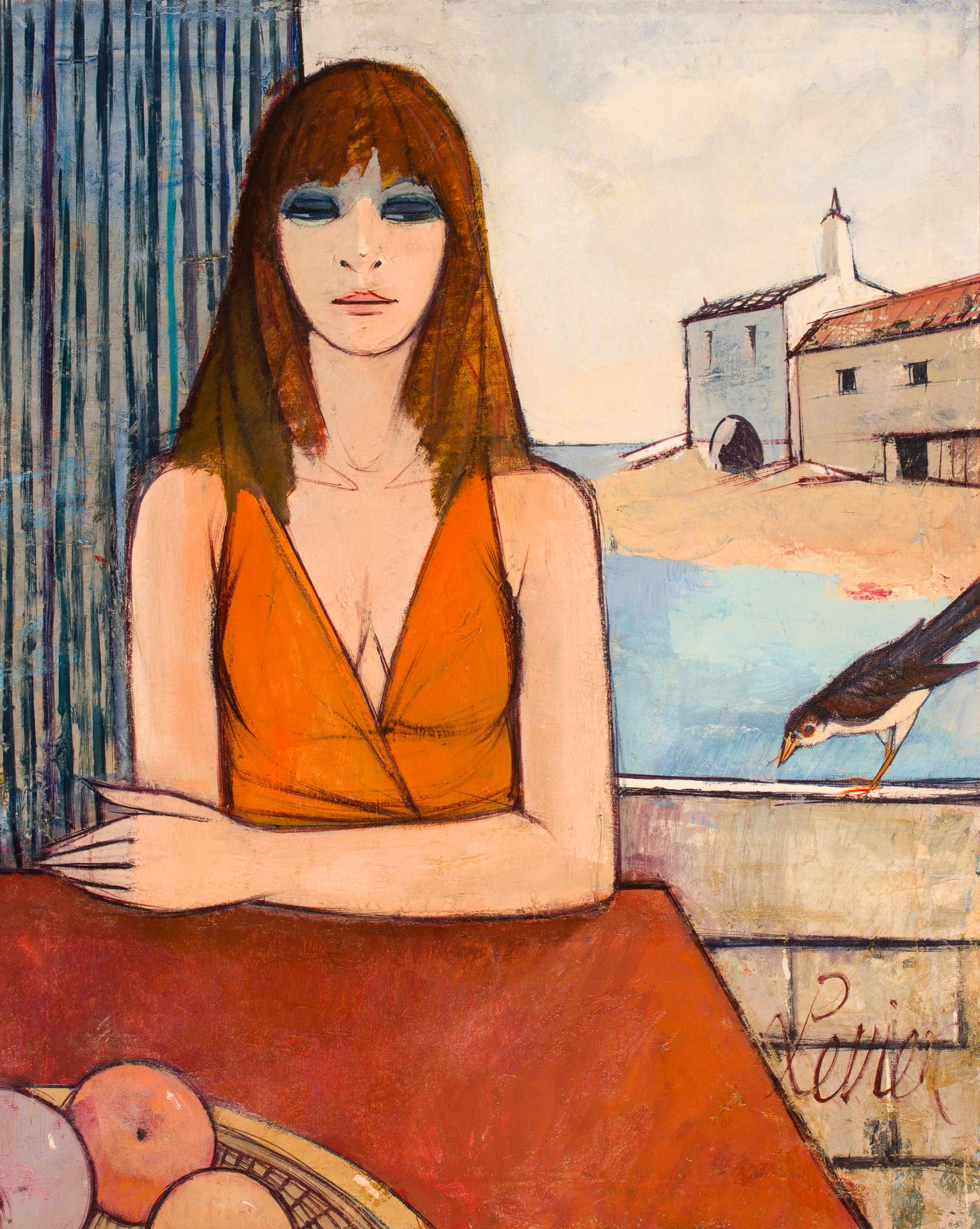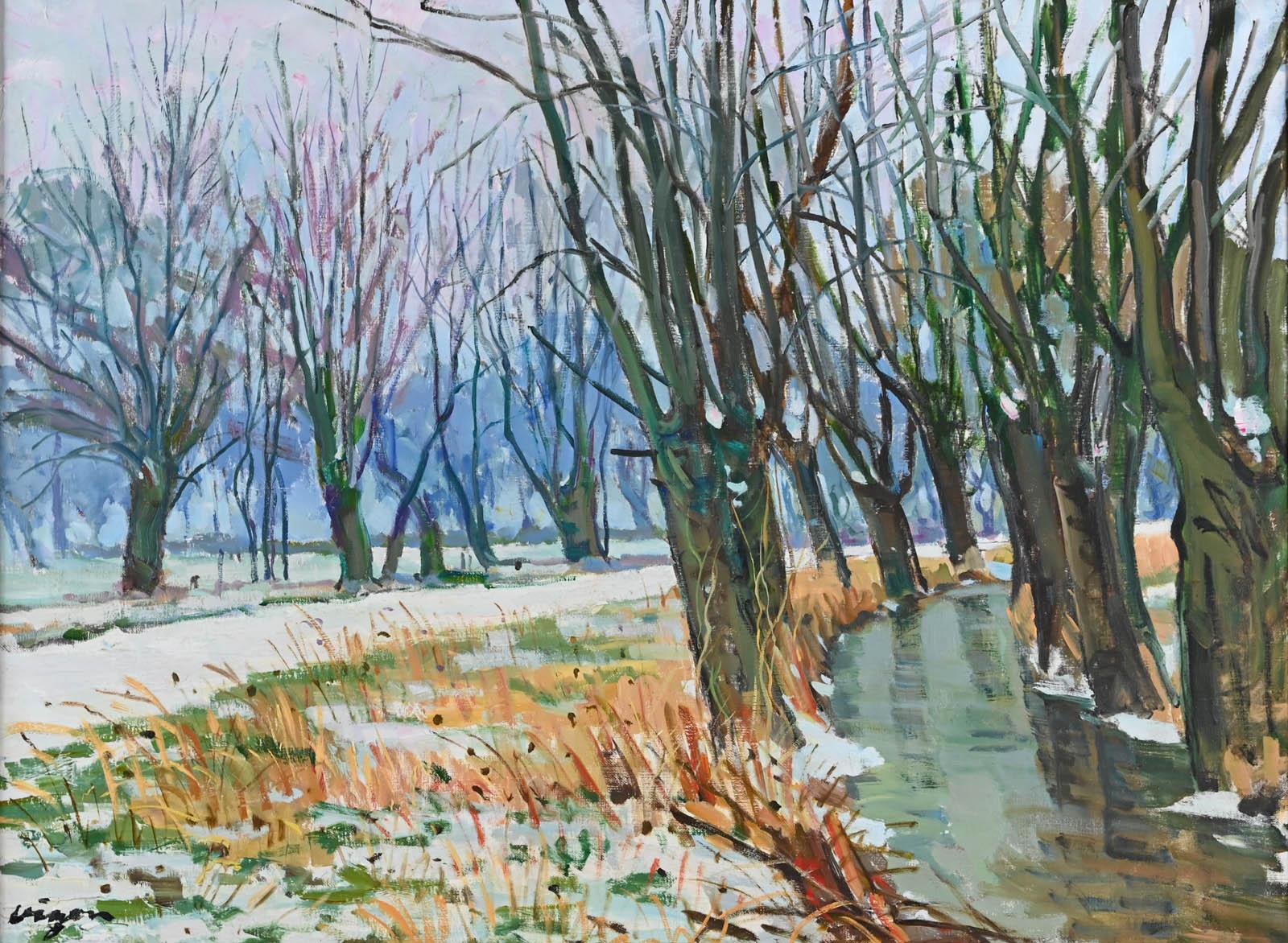Items Similar to La Rivière Orne et le Pain de S by PAULÉMILE PISSARRO - Oil, Post-Impressionist
Want more images or videos?
Request additional images or videos from the seller
1 of 9
Paul Emile PissarroLa Rivière Orne et le Pain de S by PAULÉMILE PISSARRO - Oil, Post-Impressionist circa 1940
circa 1940
About the Item
*UK BUYERS WILL PAY AN ADDITIONAL 20% VAT ON TOP OF THE ABOVE PRICE
La Rivière Orne et le Pain de Sucre by PAULÉMILE PISSARRO (1884-1972)
Oil on canvas
54 x 65 cm (21 ¼ x 25 ⅝ inches)
Signed lower right, Paulémile-Pissarro.
Executed circa 1940
This work is accompanied by a certificate of authenticity from Lélia Pissarro.
Artist biography
Paulémile Pissarro, Camille’s youngest son, was born in Eragny in 1884. He was brought up in the artistic environment of the family home there, and, encouraged by his father, began drawing at an early age. Paulémile’s godfather was Claude Monet, who became his teacher and close friend, particularly after Camille’s death in 1903.
In 1905, Paulémile exhibited at the Salon des Indépendants for the first time, showing an Impressionist landscape entitled Bords de l’Epte à Eragny. Although his father had supported his desire to be an artist, his mother was eager for him to learn a more practical trade. In 1908, Paulémile put aside his artistic pursuits to work as an automobile mechanic and test-driver, then as a lace and textile designer, allowing him only a little time to paint. While Paulémile was still working at the lace factory, his brother, Lucien, who lived in London, asked him to send over some watercolours, and the sale of these encouraged Paulémile to leave the factory and dedicate himself to painting.
By the 1920s, Paulémile had become an established Post-Impressionist artist in his own right, sharing a studio with Kees Van Dongen and spending the summer months escaping from Paris with him and Maurice de Vlaminck. In 1924, Paulémile moved to Lyons-la-Foret, a small town near Eragny, where he painted his surroundings with great pleasure, returning again and again to the placid waters of the River Epte, winding its way among willows, meadows and hills.
During the late 1920s and early 1930s, Paulémile reached the peak of his artistic development, arriving at the individual style for which he is best known. In 1930, he visited an area called Swiss Normandy and instantly fell in love with this part of the Calvados region, especially the River Orne that runs through the valley adjacent to the villages of Clécy and le Vey. The combination of blue hills and green meadows, separated by the calm waters of the river, offered Paulémile a new setting for his work. Paulémile moved in 1935 with his second wife, Yvonne Beaupel, to Clécy, where he would remain until his death.
In 1967, Paulémile had his first one-man show in the United States at Wally Findlay Galleries in New York. This led to widespread recognition and a degree of professional success that few Pissarro artists have known during their lifetime. Since his death in 1972, Paulémile’s paintings have been exhibited around the world, and interest in his work continues to grow.
- Creator:Paul Emile Pissarro (1884-1972, French)
- Creation Year:circa 1940
- Dimensions:Height: 21.26 in (54 cm)Width: 25.6 in (65 cm)
- Medium:
- Movement & Style:
- Period:
- Condition:
- Gallery Location:London, GB
- Reference Number:1stDibs: LU261210205812
About the Seller
5.0
Recognized Seller
These prestigious sellers are industry leaders and represent the highest echelon for item quality and design.
Platinum Seller
These expertly vetted sellers are 1stDibs' most experienced sellers and are rated highest by our customers.
Established in 1964
1stDibs seller since 2015
95 sales on 1stDibs
Typical response time: 1 hour
Associations
Society Of London Art Dealers
- ShippingRetrieving quote...Ships From: London, United Kingdom
- Return PolicyA return for this item may be initiated within 7 days of delivery.
More From This SellerView All
- L'Île aux Oiseaux by Paulémile Pissarro - Landscape oil paintingBy Paul Emile PissarroLocated in London, GB*UK BUYERS WILL PAY AN ADDITIONAL 20% VAT ON TOP OF THE ABOVE PRICE L'Île aux Oiseaux by Paulémile Pissarro (1884-1972) Oil on canvas 61 x 47.6 cm (24 x ...Category
1930s Post-Impressionist Figurative Paintings
MaterialsCanvas, Oil
- Les Bateaux Lavoir, Paris by Georges Manzana Pissarro - River sceneBy Georges Henri Manzana PissarroLocated in London, GB*UK BUYERS WILL PAY AN ADDITIONAL 5% IMPORT DUTY ON TOP OF THE ABOVE PRICE Les Bateaux Lavoir, Paris by Georges Manzana Pissarro (1871-1961) Oil on canvas 38 x 46 cm (15 x 18 ¹/₈ in...Category
Early 1900s Post-Impressionist Figurative Paintings
MaterialsCanvas, Oil
- Chemin de la Vallée, Oil on Canvas by Paulémile PissarroLocated in London, GBChemin de la Vallée by Paulémile Pissarro (1884 - 1972) Oil on canvas 46 x 61 cm (18 ¹/₈ x 24 inches) Signed lower left, Paulémile. Pissarro- Signed and titled on the reverse Pro...Category
Mid-20th Century Post-Impressionist Landscape Paintings
MaterialsOil, Canvas
- Femmes Maroccaines by Marcel Dyf - River scene paintingBy Marcel DyfLocated in London, GBFemmes Maroccaines by Marcel Dyf (1899-1985) Oil on canvas 60.5 x 73 cm (23 ⁷/₈ x 28 ³/₄ inches) Signed lower left, Dyf 1957Category
1950s Post-Impressionist Landscape Paintings
MaterialsCanvas, Oil
- Le Coup de Vent by Paulémile Pissarro - Post-Impressionist oil river sceneBy Paul Emile PissarroLocated in London, GBLe Coup de Vent by Paulémile Pissarro (1884-1972) Oil on canvas 65 x 92 cm (25⁵/₈ x 36¹/₄ inches) Signed lower left, Paulémile Pissarro; signed and titled on the reverse Executed cir...Category
1940s Post-Impressionist Landscape Paintings
MaterialsCanvas, Oil
- La Mare et les Vieux Saules by Paulémile Pissarro, Post-Impressionist riverscapeBy Paul Emile PissarroLocated in London, GB*UK BUYERS WILL PAY AN ADDITIONAL 5% IMPORT DUTY ON TOP OF THE ABOVE PRICE La Mare et les Vieux Saules by Paulémile Pissarro (1884-1972) Oil on canvas 46 x 55 cm (18 ¹/₈ x 21 ⁵/₈ i...Category
1930s Post-Impressionist Landscape Paintings
MaterialsCanvas, Oil
You May Also Like
- A. J. Bennett - Light and Shade - Post Impressionist Painting, South Africa 1919Located in Meinisberg, CHA. J. Bennett (South African, fl. Early 20th century) Light and Shade • Oil on canvas artist board ca. 42.5 x 29.5 cm • Later frame ca. 53.5 x 41 cm Worldwide shipping is complime...Category
1910s Post-Impressionist Figurative Paintings
MaterialsCanvas, Oil, Board
- Femme lisant dans un jardinBy Georges d'EspagnatLocated in Washington, DCSigned with monogram lower left * The Robert Lehman Collection at the Metropolitan Museum of Art contains more paintings (nine) by Georges D’Espagnat than any other nineteenth- or ...Category
1910s Post-Impressionist Figurative Paintings
MaterialsCanvas, Oil
- PrintempsBy Charles LevierLocated in Costa Mesa, CAA beautiful woman sits at an open window, gazing down at a small bird who has landed nearby in this serene portrait by Charles Levier. Warm orange tones are played off their complements in shades of blue, the artist utilizing several different layers of oils to create a subtle and relaxed view of a spring day near the sea. Beyond the window a small chapel sits on a peninsula, surrounded tranquil blue waters. This work, like many of Levier's, belongs to the French figurative movement of the Glorious Thirty (Les Trente Glorieuses) - the golden period of thirty years after WWII which were a time of great hope and prosperity in France. Inspired by Hollywood cinema, Charles Levier sought harmony in composition and purity of color and form. His said that his creations represented "a light and delicate world, of dark and subtle shades and colors." Levier worked in a somewhat abstracted, cubist style. Additionally he often employed the French technique of "cloisonnism" (after the French for "partition"), a style of post-Impressionist painting with bold and flat forms separated by dark contours, also seen in this work. The term was coined by critic Edouard Dujardin on the occasion of the Salon des Indépendants, in March 1888 and was commonly used by artists like Émile Bernard, Louis Anquetin, Paul...Category
Mid-20th Century Post-Impressionist Figurative Paintings
MaterialsCanvas, Oil
- Haystack with Resting FiguresBy John Maclauchlan MilneLocated in Hillsborough, NCScottish artist John Maclauchlan Milne, RSA, (1885-1957) is a contemporary of Scottish Colourists Peploe, Fergusson, Cadell and Hunter. Like the...Category
1920s Post-Impressionist Landscape Paintings
MaterialsCanvas, Oil
- Vue de RouenBy Gaston SebireLocated in LE HAVRE, FRGaston Sebire (1920-2001) Vue de Rouen Oil on canvas Size : 65 x 81 cm Signed lower right Provenance : Private Collection, France Very good condition. Original canvas. Frame included...Category
1960s Post-Impressionist Landscape Paintings
MaterialsCanvas, Oil
- Le port de DieppeBy Jacques BouyssouLocated in LE HAVRE, FRJacques BOUYSSOU (1926-1997) Le port de Dieppe, 1969 Oil on original canvas, in perfect condition, original canvas. Large size : 90 x 118 cm Signed lower left Vintage frame Provena...Category
1960s Post-Impressionist Landscape Paintings
MaterialsCanvas, Oil
Recently Viewed
View AllMore Ways To Browse
Post Impressionist Artist
1972 Oil
Vintage Les Paul
Pain Vintage
Impressionist Paintings Pissarro
Man Oil Painting 1940
Pissarro Oil
Pissarro Camille
Monet Style Landscape
Impressionist Paintings Camille Pissarro
Vintage Lace Frames
Les Hill
Oil Pain
Findlay Galleries
Findlay Gallery
Green Meadow
1920s Painting Green
Maurice Calls





